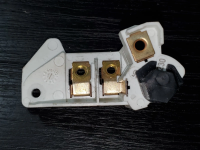What would the pump motor do it the Centrifugal Switch were to be hitting the terminal board because I didn't get the terminal board over the lower mounting stud?
It gnawed a bit of the edge of the board but didn't hit any terminals.
It's on a pump I repurposed, and it runs fine until it gets primed and under a load then it trips gfi.
Hopefully my rebuild error is the cause.
It gnawed a bit of the edge of the board but didn't hit any terminals.
It's on a pump I repurposed, and it runs fine until it gets primed and under a load then it trips gfi.
Hopefully my rebuild error is the cause.







